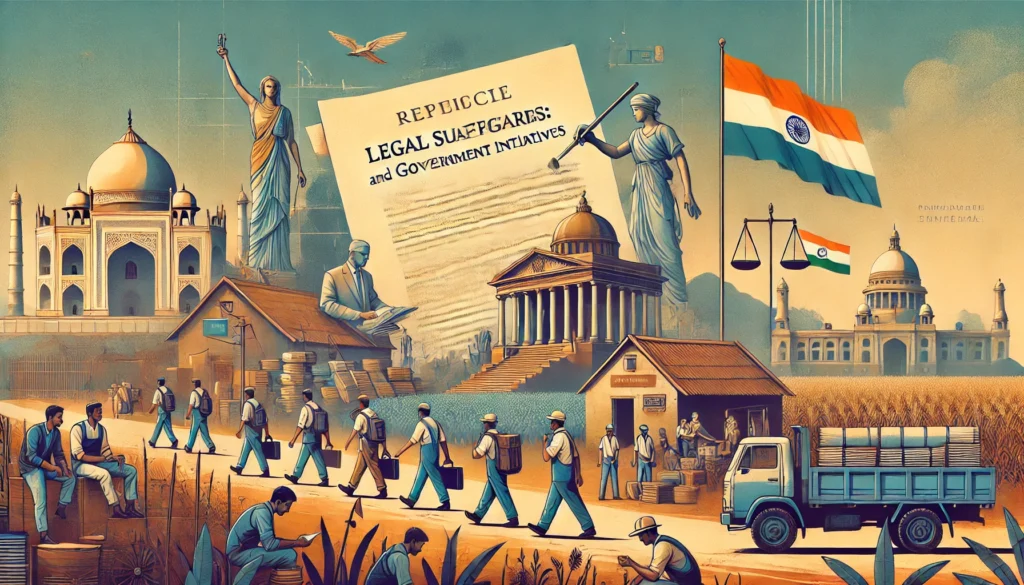Published On: October 11th 2025
Authored By: Shweta Anand
Dr. D Y Patil College of Law
Introduction
India is a country with great religious and cultural diversity. This diversity shows in its legal system, particularly in personal law, which covers marriage, divorce, inheritance, and adoption. The Indian legal system acknowledges the personal laws of various religious communities, so the rules for marriage and divorce can differ widely based on the individual’s religion.
Hinduism
In Hinduism, marriage and divorce are primarily governed by the [1]Hindu Marriage Act, 1955. This is an act to amend and codify the law relating to marriage among Hindus. According to the Bare Act, this law extends to the whole of India, except the State of Jammu and Kashmir, and applies also to Hindus domiciled in the territories to which this Act extends who are outside those territories. The Hindu Marriage Act applies to people who are Hindus by religion, and Buddhists, Jains, and Sikhs. It also applies to a person who is not a Muslim, Christian, Parsi, or Jew by religion
Marriage
When we speak of marriage in Hinduism, there are a few essentials that should be focused on. Section 5 of the Hindu Marriage Act (HMA), 1955, states these essentials.
- Monogamy: It is necessary that at the time of marriage, neither of the parties should have a living spouse.
- Sound mind: Both parties should be of sound mind at the time of marriage. Both the groom and the bride have free consent. According to Section 6 of the HMA, there should be guardianship consent for the bride’s marriage. This section was repealed by the [2]Child Marriage Restraint (Amendment) Act, 1978
- Legal age for marriage: As per the [3]Prohibition for Child Marriage Act, 2006, the legal age for marriage for a male is 21 years, and that for a female is 18 years.
- Prohibited relationships: Marriage should not be a prohibited relationship. According to Hindu customs, traditions, and laws, a prohibited relationship is between direct ancestors and their descendants, and marriage between siblings and other close relatives.
- Sapinda relationship: Sapinda marriages are defined under Section 3 of the HMA, as two persons are said to be “sapindas” of each other if one is a lineal ascendant of the other in the limits of sapinda relationship, or if they have a common lineal ascendant who is within the limits of sapinda relationship regarding each of them. In simple words, A sapinda marriage is one between individuals who are related to each other within a certain degree of closeness. Therefore, the relation must not be a sapinda relation unless custom permits.
A marriage not fulfilling any of these conditions is void or voidable, depending on the condition breached
There are 3 types of marriages :
- Valid Marriage: which meets all five conditions.
- Void Marriage: void marriages include those where parties are underage, non-Hindus, already married, or within prohibited relationships
- Voidable Marriage: voidable marriages include impotence, lack of valid consent due to mental incapacity or fraud, and the bride being pregnant by another man at marriage
[4]Section 7 of the Hindu Marriage Act, 1955, states that a Hindu marriage can be performed using the traditional rituals and customs followed by either party. Saptpadi is one of the most important rituals of a Hindu marriage. Saptpadi signifies seven steps or circles around the sacred fire. The seven steps symbolize promises made by the couple to each other, with each step representing a specific commitment. The marriage is considered legally valid and complete upon the completion of the seventh step. The registration of the marriage must be done. State governments may prescribe rules to facilitate the proof of marriage through registration.
Divorce
Section 13 of The Hindu Marriage Act, 1955, discusses divorce and the grounds on which a spouse can seek divorce. It states that any marriage solemnized, whether before or after the commencement of this act, may, on a petition presented by either the husband or the wife, be dissolved by a decree of divorce on the grounds of
- It means having voluntary sexual intercourse with any person other than his or her spouse
- Desertion for a continuous period of at least 2 years. – It means one spouse abandoning the other without a reasonable reason or consent
- Conversion from Hinduism.
- Incurable unsoundness of mind or certain mental disorders making cohabitation unreasonable.
- Suffering from venereal disease in communicable form.
- Renunciation of the world by entering a religious order.
- Not heard of as alive for 7 years or more.
Landmark Judgements
In the [5]Naveen Kohli v. Neelu Kohli case, 2006, a landmark judgment was made
regarding the irretrievable breakdown of marriage. In this case, the appellant Naveen Kohli married Neelu Kohli in 1975, and 3 sons were born out of their marriage. The appellant constructed 3 factorise for business and a bungalow for them. Later, he found that his wife had transferred sufficient business and property. She was also in a compromising position with some other person. The respondent had filed a large number of cases against the appellant and had harassed and tortured him. The major question that arose in this case was whether the marriage could be dissolved on the grounds of irretrievable breakdown of the marriage? The Court rightly held that a law of divorce based mainly on fault is inadequate to deal with a broken marriage. Thus, irretrievable breakdown of marriage is an adequate ground of divorce for parties that can no longer live together.
In [6]Smt. Seema Vs. Ashwani Kumar, 2006 (2) SCC 578, the Supreme Court emphasized mandatory marriage registration for all, setting a precedent for upholding individual rights. The Supreme Court held that “Marriages of all persons who are citizens of India belonging to various religions should be made compulsorily registrable in their respective States, where the marriage is solemnized.”This would be instrumental in halting child marriages, safeguarding the minimum age of marriage, curbing bigamy/polygamy, enshrining a married woman’s right to claim marital rights, discouraging men from deserting women, and condemning trafficking disguised as marriage.
Islam
Mohammedian or Muslim Law
To understand the legal aspects of the Muslim religion, we first need to know what Islamic law is. In Islam, followers of Mohammed are called Muslims. But Mohammed is neither a God nor the son of god because it is clearly said in the Quran
Hawa Allah-u-Ahad = He is the God, the one (only) and
Lam-u-Lid, Wa Lam-you-Lad = he begets not and not was he begotten.
Because of this Quranic injunction, it cannot be said that Mohammed is god or the Son of god. God (Allah) chose Mohammed as His Rasool or messenger to deliver his messages to people.
In India, Muslim marriage and divorce are primarily governed by Muslim personal laws, which are largely derived from the Quran and Hadith.
Marriage
Muslim Law treats marriage ( Nikah ) as a contract. It is not like a contract in a commercial world. It is a civil contract in Islam, not a sacrament. It is meant to legalize sexual relations and procreation. It is characterized as a contract because all ingredients of a contract, like offer, acceptance, witness, consideration, etc., are present. The legal incidents of marriage in Islam are extremely simple and can be performed without any ceremony.
According to Hindu Law, Marriage is a “Sanskar”, whereas according to Islam, it is “Ibadat”. As per both the laws, the institution of marriage is ordained by God for the protection of society against unchastity.
When we speak about Nikah in muslims, there are some essential elements required to be present. They are :
- Ijab – It is the proposal for marriage
- Qubool – It is the acceptance of marriage
- There must be free consent of both parties. The intention of marriage must be unambiguous.
- Parties must be competent – must be muslim, of sound mind, and marriageable age. (puberty – presumed to be 15 years, actual legal age according to state law, i.e,. 21 for males and 18 for females )
- Witness – In sunni muslims, there is a requirement of 2 male or 1 male and 2 females as witnesses. While there is no such requirement among shia muslims.
- Dower (Mahar) – It is a mandatory gift, i.e., a sum of money or other property to be paid or delivered to the wife.
There are 3 types of marriages in the muslim community. A marriage may either be valid (Sahih), Void (Batil), or Irregular (Fasid).
- Sahih – Every muslim of sound mind who has attained majority can enter into a contract of marriage. The majority is attained at puberty. It is presumed that the majority of boys are 12 years and for girls is 9 years old. While under Islamic law it is 15 years, and under the Indian Majority Act it is 18 years.
- Fasid – A fasid marriage may be terminated by either party at any time. In this, neither divorce nor the intervention of a court is necessary. One of the spouses may say, ‘I have relinquished you, ‘ and the marriage ends. If they were involved in consummation, then the wife is entitled to dower (mahar) and must observe Iddat for three months.
Iddat – It is a waiting period followed by a muslim woman after the dissolution of marriage due to divorce or the death of the husband, for the clarity of the paternity in case of pregnancy, and allows mourning and reflection
Now the question arises, what type of marriages are considered as irregular under muslim law? So the marriages mentioned below are considered irregular :
- Marriage without a witness
- Marriage with women undergoing Idaat
- Marriage is prohibited because of the difference in religion
- Marriage in contravention of the rules of unlawful conjunction
- Marriage with two sisters during the lifetime of the other
- Marriage with the fifth wife
- Batil – It is an unlawful connection, and no mutual rights of inheritance between the parties arise. Moreover, the children do not get any inheritance and are acknowledged as illegitimate.
In muslims, a muslim man may marry 4 wives at a time. This number should not exceed. However, a muslim woman can marry only one husband, and if she marries another husband, she is liable for bigamy under section 82 of the [7]Bhartiya Nyaya Sanhita (BNS). This section replaces section 494 of the Indian Penal Code (IPC)
Divorce
In Islam, dissolution of marriage can be done by the husband, by the wife, by mutual consent, or by judicial divorce
By husband :
- Talaq-ul-Sunnat – In this form of divorce, the marriage is not ended immediately. Husband has the option to revoke the divorce during the iddat period
- Talaq-ul-Biddat – In this form of divorce, when the husband says “Talaq” 3 times either in one sitting or through a written declaration, the marriage ends immediately. It allows the husband to unilaterally divorce his wife without her consent or any judicial intervention.
Now this is invalid in India under the [8]Muslim Women (Protection of Rights on Marriage) Act, 2019.
By wife :
- Talaq-e-tafweez – In this form of divorce husband delegates the right to divorce to the wife in the Nikahnama.
- Lian: In this form of divorce, the wife has the right to divorce if her husband falsely accuses her of adultery.
By mutual consent :
- Mubarat: In this form of divorce, both husband and wife mutually decide to separate.
- Khula: In this form, the wife initiates the divorce, offers consideration which may include the return of mahr for the dissolution of the marriage.
Judicial divorce :
According to the [9]Dissolution Of muslim Marriages Act, 1939, A muslim woman can seek divorce on grounds like
- Husband’s disappearance for 4 years.
- Failure to provide maintenance for 2 years.
- Husband’s imprisonment for 7 years or more.
- Husband’s cruelty, impotence, or insanity.
- Marriage before puberty and repudiation after puberty.
Landmark Judgments
In the [10]Shayara Bano v. Union of India and Ors. AIR 2017 SC 4609 case of 2017 Supreme Court of India declared Triple Talaq or Talaq-e-Biddat as unconstitutional with a 3:2 majority. As per the majority, it was held that the Triple Talaq is not protected by the exception laid down in Article 25 of the Constitution, and the court found the said practice not an essential element of the Islamic religion. The judgment was concerned mainly with the rights of women and the preservation of marriage.
In [11]Mohd. Ahmad Khan v. Shah Bano Begum,1985 SCR (3) 844, case Supreme Court ruled that a divorced muslim woman is entitled to get maintenance even after the iddat period. However, the court said that if the divorced wife is self-sufficient, the husband’s duty to offer maintenance concludes with the conclusion of the iddat period.
In [12]Yousuf Rawther v. Sowramma, AIR 1971 Ker. 261 case the defendant Yousuf Rawther failed to provide maintenance to his wife ( plaintiff) during the 2 years of separation. Here, the question arose whether the wife can claim dissolution of marriage on the grounds of failure of maintenance by the husband for two years? The court allowed the dissolution of marriage under section 2 (ii) of the Dissolution of muslim Marriage Act, 1939. But the court dismissed the appeal and ordered each party to bear their respective costs.
Christianity
In Christianity, marriage and divorce are mainly governed by the [13]Indian Christian Marriage Act, 1872 , the [14]Special Marriage Act 1954, and the [15]Indian Divorce Act 1869
Marriage
For a valid marriage, both parties should be of a legal age that is 21 years for boys and 18 years for girls. The marriage should be solemnized by a clergy or registrar in the presence of 2 witnesses. Moreover, the Christian Marriage Act of 1872 applies when one or both of the parties to the marriage are Christians. Generally, the ceremonies for the marriage are conducted between 6 am to 7 pm.
Divorce
Similar to Hindu law, in Christianity, either the husband or the wife can file for divorce.
Grounds for divorce include adultery, conversion from Christianity, incurable mental illness, leprosy, venereal disease, disappearance (not heard of for 7 years), refusal to consummate, and cruelty. Moreover, there are a few other grounds exclusively for women, for example, rape. Under Section 10‑A, Christian couples must be judicially separated for two years before filing for divorce by mutual consent
Landmark Judgements
In [16]Ammini E.J. v. Union of India (1995), the constitutionality of Section 10 of the Indian Divorce Act was challenged. The main issue was that the woman had to prove cruelty and desertion for divorce on the grounds of adultery, while the man had to just prove adultery. Overviewing gender discrimination in this scenario, the Kerala High Court ruled this discriminatory and unconstitutional, upholding equality under Article 14 of the Constitution
In [17]Smt. Lily Thomas v. Union of India (2000), a Christian man converted to Islam to marry again. The Supreme Court ruled that mere conversion does not dissolve a Christian marriage. It said the first marriage remains valid unless dissolved legally. This was mainly done to prevent the misuse of the conversion of religion to bypass monogamy laws.
Parsi
In India, all aspects of marriage and divorce among Parsis are governed by the [18]Parsi Marriage and Divorce Act, 1936.
Marriage
In Parsis, a marriage to be valid and legal should contain certain essentials, like
- Both the Husband and wife are Parsi
- The marriage should be solemnized as per Parsi customs and rites in the presence of a Parsi priest.
- At the time of marriage, neither of the parties should have a living spouse.
- All marriages must be registered by the local registrar under the act.
- If a person commits bigamy, he is unishable under section 82 of the Bhartiya Nyaya Sanhita.
Divorce
A party, whether husband or wife, can seek dissolution of marriage on the grounds of cruelty, adultery, desertion, Unsound mind, infectious diseases, forced marriage, etc.
Inter-faith marriage
In India, interfaith marriage or interreligious marriage is allowed and legal. It is governed by the Special Marriage Act of 1954. It allows any two people to enter into a marriage irrespective of their religion. But both parties must be of legal age, sound mind, and not married. But interfaith marriages are not well supported till now. Thus, the Supreme Court and High Courts have consistently upheld the right of consenting adults to marry regardless of religion, caste, or community, and provide police protection in cases where the couple fears for their safety.
Conclusion
In India, marriage and divorce laws vary among different religions, including Hindus, Muslims, Christians, and Parsis. Each religion has specific rules that its followers adhere to. These are known as personal laws. Meanwhile, the Indian Constitution guarantees the rights to equality and freedom for all individuals.
For those who prefer not to follow religious rules or for interfaith couples, there is the Special Marriage Act of 1954. This law allows them to marry in a civil, non-religious manner. However, the rules for marriage and divorce still differ for each group, which can create issues, particularly for women.
In summary, while India permits individuals to follow their religious rules, it also faces the challenge of ensuring fair treatment for everyone. Many believe changes in the law are necessary, or that there should be a single set of rules for all religions, to make marriage and divorce laws equal for all, without infringing on religious beliefs.[20]
References
[1] Hindu Marriage Act , 1955
[2] Child Marriage Restraint (Amendment) Act, 1978
[3] Prohibition for Child Marriage Act, 2006
[4] Hindu Marriage Act , 1955
[5] Naveen Kohli v. Neelu Kohli case, 2006
[6] Smt. Seema Vs. Ashwani Kumar, 2006 (2) SCC 578
[7] Bhartiya Nyaya Sanhita , 2023
[8] Muslim Women (Protection of Rights on Marriage) Act, 2019.
[9] Dissolution of Muslim Marriages Act, 1939.
[10] Shayara Bano v. Union of India and Ors. AIR 2017 SC 4609.
[11] Mohd. Ahmad Khan v. Shah Bano Begum,1985 SCR (3) 844.
[12] Yousuf Rawther v. Sowramma, AIR 1971 Ker. 261.
[13] Indian Christian Marriage Act, 1872.
[14] Special Marriage Act 1954.
[15] Indian Divorce Act 1869
[16] Ammini E.J. v. Union of India (1995).
[17] Smt. Lily Thomas v. Union of India (2000).
[18] Parsi Marriage and Divorce Act, 1936.




